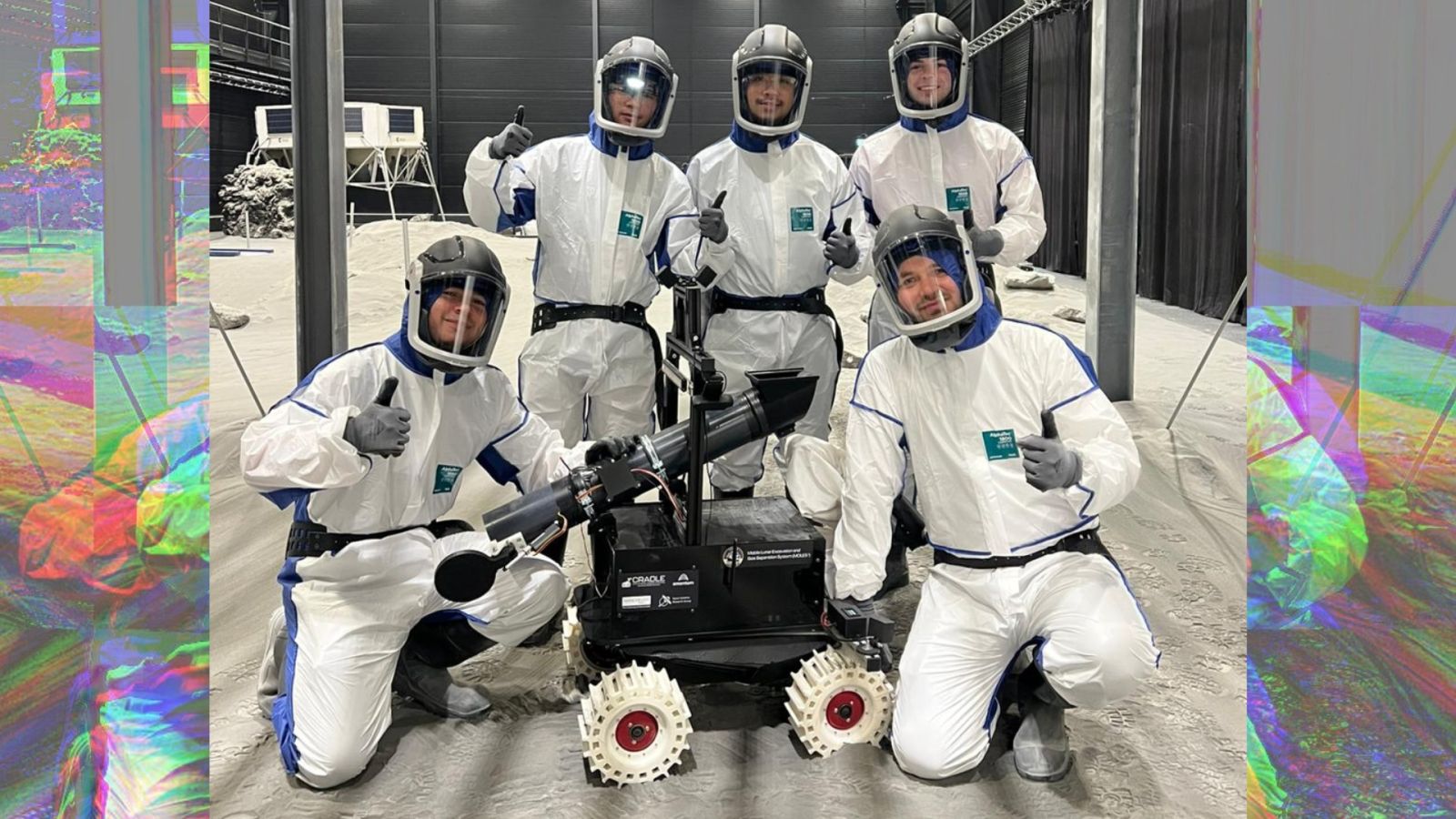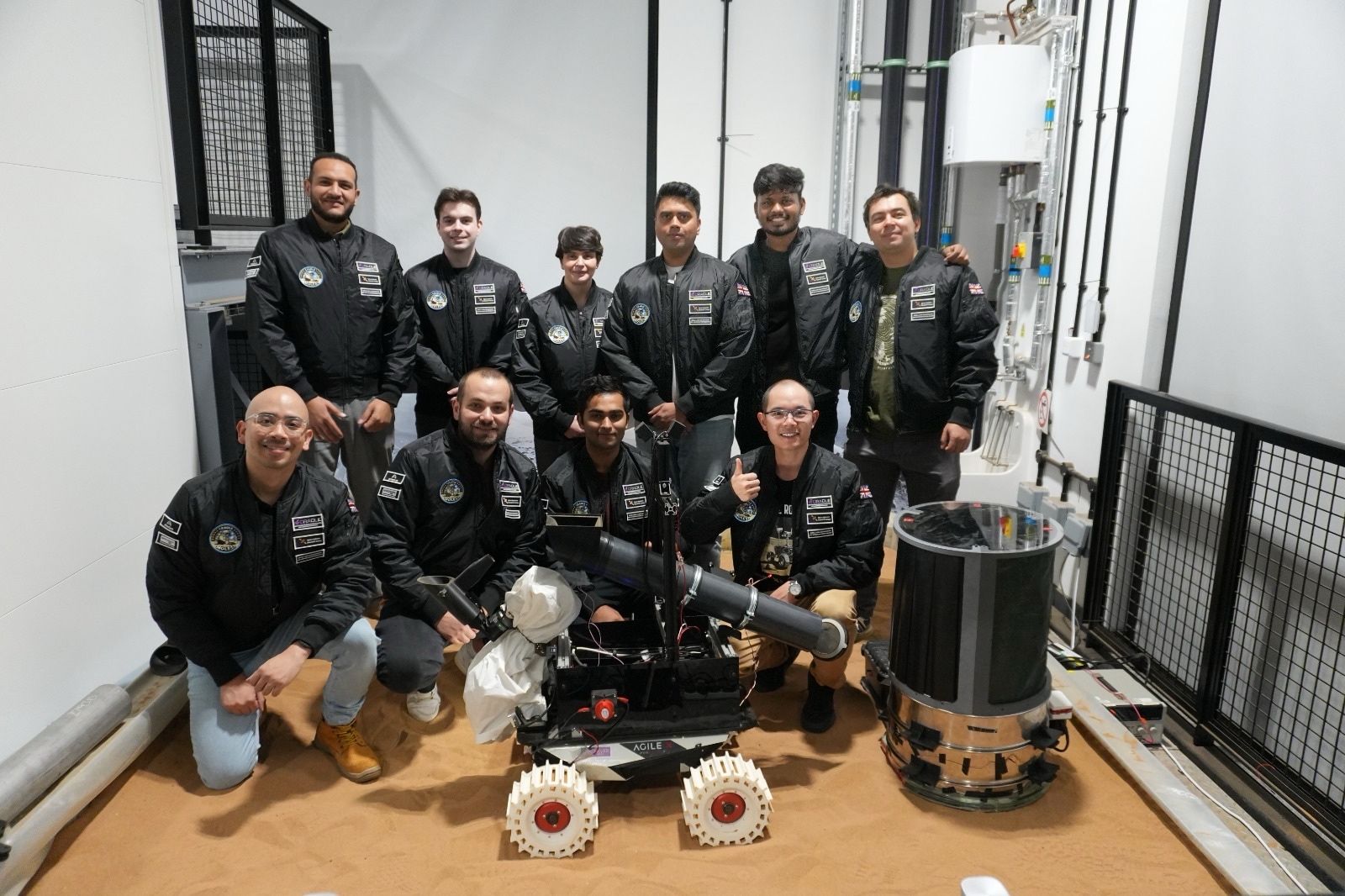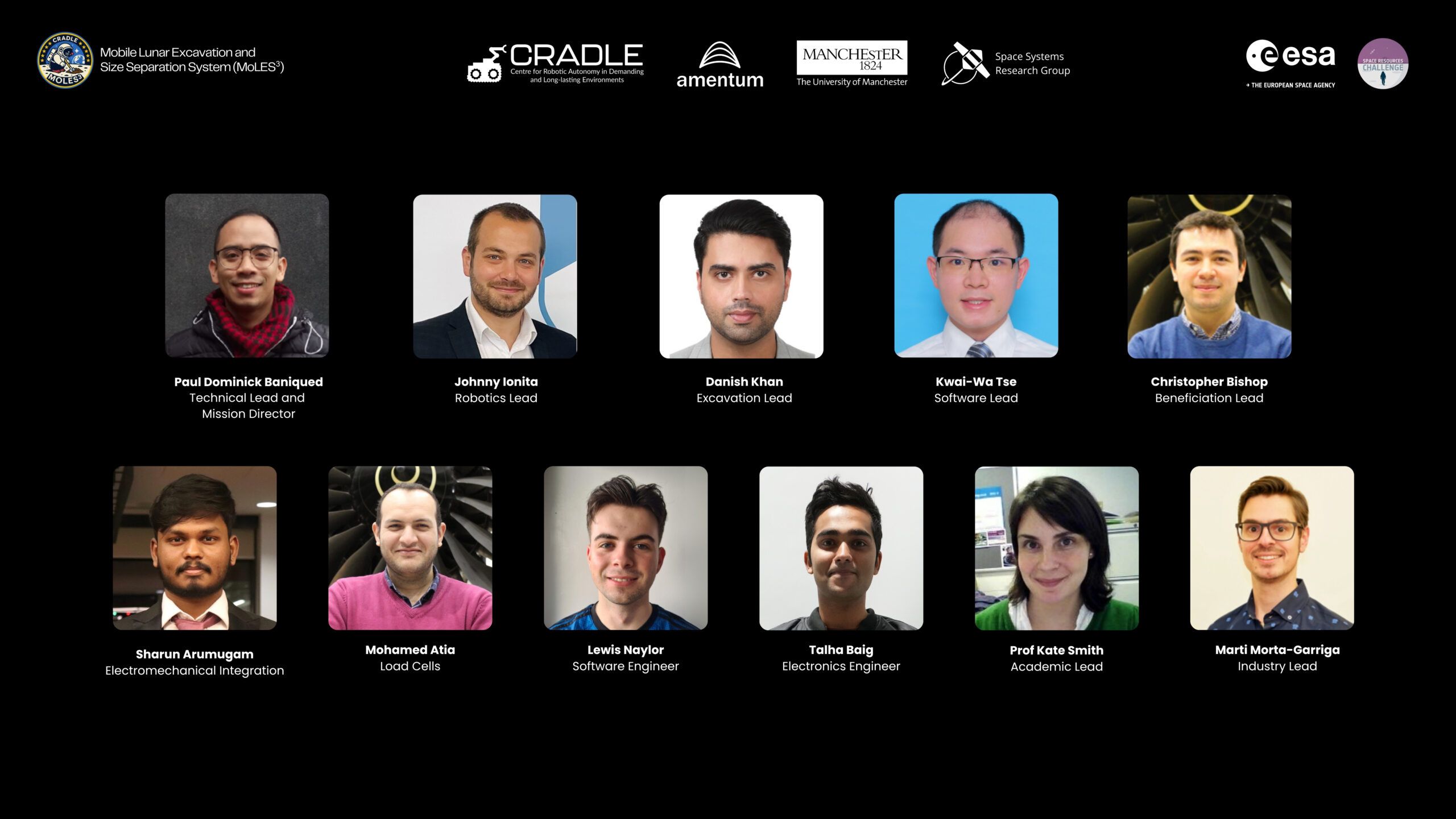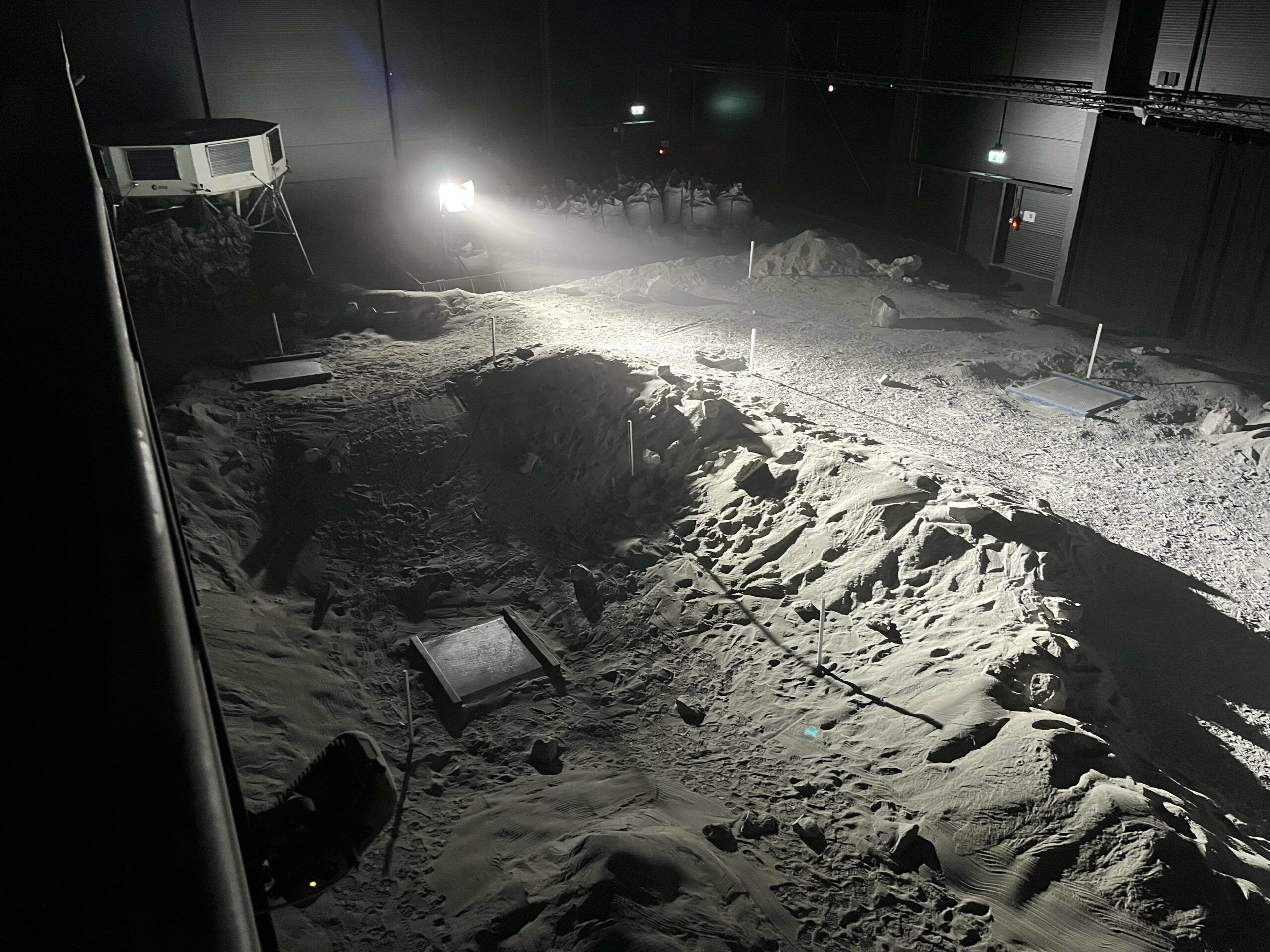Team CRADLE represent GB in ESA Space Resources Challenge at LUNA Analog Facility in Cologne, Germany

Future lunar missions will rely on robotic autonomy to ensure sustainable operations.
This is what Team CRADLE demonstrated as they took on the European Space Agency’s (ESA) 2nd Space Resources Challenge, held from 13–17 October 2025 at the LUNA Analog Facility in Cologne, Germany.
As one of the eight finalists — and one of only two teams representing Great Britain — the team successfully deployed the Mobile Lunar Excavation and Size Separation System (MoLES³) in lunar-like conditions for 2.5 hours, the duration set by the challenge organisers. Several constraints were also considered, including mass (<60 kg), power (<300 Wh), and dust mitigation — all of which the team managed to address within a development period of just over nine months.
The Space Resources Challenge is an initiative launched by ESA and the European Space Resources Innovation Centre (ESRIC) in 2021 to promote challenge-driven innovation and engage the community in developing novel solutions for Europe’s exploration programme.
In its second edition, the challenge focused on developing technologies for excavating and processing lunar regolith that can be used to extract oxygen and building materials directly on the Moon.
CRADLE — a Prosperity Partnership between Amentum and The University of Manchester Centre for Robotics and AI, in collaboration with The University of Manchester Space Systems Research Group — is composed of academic researchers, robotics engineers, and industry experts with long-standing R&D experience in the fields of space and planetary exploration. The ESA-SRC provides an excellent example of academic–industry collaboration with an exciting twist: the development of a modular lunar rover and a stationary beneficiation system.
“Team CRADLE aims to leverage our achievements and lessons from the ESA Space Resources Challenge to keep improving MoLES³ into a system that showcases reliable robotic autonomy in future lunar missions.”
Dr Paul Dominick Baniqued, Technical Lead and Mission Director for CRADLE-MoLES³
Watch Team CRADLE’s highlights video:
Watch Team CRADLE’s full ESA-SRC livestream replay here:


